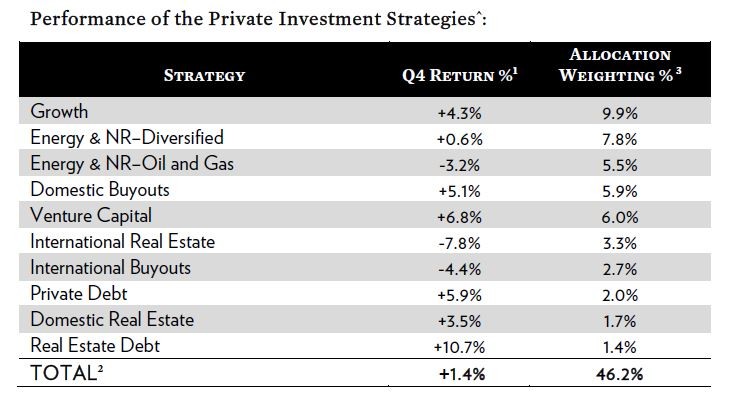And Venture Capital Funds Posted Positive Returns in Q3 and DoubleDigit
Post on: 7 Июль, 2015 No Comment

U.S. Private Equity and Venture Capital Funds Posted Positive Returns in Q3 and Double-Digit Growth Over the First Three Quarters of 2014, According to Cambridge Associates
BOSTON, MA, Mar 11, 2015 (Marketwired via COMTEX) —
Returns on U.S. private equity and venture capital funds based in the U.S. remained positive in the quarter ending September 30, 2014, though both were down from their second-quarter results. Venture capital, benefitting from a healthy IPO market, outperformed private equity in the third quarter, while both outpaced key public market indices, according to benchmarks published by Cambridge Associates LLC tracking these alternative asset classes.
The Cambridge Associates LLC U.S. Private Equity Index(R) rose 1.7% in Q3 and 10.2% year-to-date (YTD). Over the same periods, the Cambridge Associates LLC U.S. Venture Capital Index(R) climbed 2.4% and 10.8%. For comparison, the S&P 500 was up 1.1% and 8.3% for the quarter and YTD, respectively. Q3 marked the ninth consecutive quarter of positive returns for the private equity benchmarks and the 12th consecutive quarter for venture capital.
Sources: Cambridge Associates LLC, Frank Russell Company, Standard and Poor’s, and Thomson Datastream. * Capital Changes Only
As shown in the table above, for the ten, 15, 20, and 25-year periods ending on September 30, 2014, both Cambridge Associates benchmarks handily beat public market returns. Over shorter timelines, the results have been mixed.
Private Equity (PE) Performance
Health Care Was the Leading Sector in Q3
Out of the seven sectors in Q3 that represented at least 5% of the PE index, only energy turned in a negative performance, though two more, manufacturing and software, each rose less than 1.0%. Health care led the way returning 5.5% for the period, with write-ups on health care companies in the 2007 vintage year accounting for the bulk of the gain.
Energy fell modestly — 0.8% — from the previous quarter. The principal cause of the sector’s drop in Q3 was write-downs in the 2001, 2005, 2006, and 2010 vintages.
Distributions Continued to Outnumber Contributions, Though Both Fell from Q2
Fund managers were less aggressive in calling up capital from their LPs [limited partners] in the third quarter than they were in the second, said Keirsten Lawton, Managing Director and Co-Head of US Private Equity Research at Cambridge Associates. Total calls dropped nearly 18% to $19.6 billion. Distributions were down 6.2%, but at $35.9 billion, they still heavily outnumbered contributions and made Q3 the 11th consecutive quarter in which distributions ran ahead of contributions.
Contributions and distributions for the first three quarters of 2014 were $61.2 billion and $111.8 billion, respectively, both well ahead of the same period in 2013, when contributions were $40 billion and distributions were $90 billion.
Top-sized PE Vintages in Q3 All Had Positive Returns
On September 30, there were six vintage years in the PE index that represented at least 5% of the benchmark’s value and all had positive returns for the quarter. Funds raised in 2012 led the way earning 5.4% for the third period. The largest vintage year by weight, 2007, returned 2.0%. The 2005 and 2006 vintages had the lowest returns: 0.6% and 0.7%, respectively.
Venture Capital (VC) Performance
Software Was the Top Performer Among a Narrow Range of Large Sectors
The venture capital index was dominated by three sectors that comprised almost 80% of the benchmark’s value: information technology (IT), health care, and software. No other sector in the benchmark during Q3 represented 5% or more of the index’s value.
Software topped the three largest sectors in terms of performance with a gain of 6.2% for the quarter. It was followed by IT — the largest sector by weight, representing more than one-third of the index — which returned 3.9%. Health care, the third largest sector, returned 1.7% for the quarter.
VC Calls Fell While Distributions Increased and Continued to Outstrip Contributions
Paralleling the same phenomenon in the private equity benchmark, fund managers in the venture capital index continued to distribute more capital than they called during the third period. But unlike the PE index, distributions in Q3 increased from their level in Q2.
Fund managers in the VC index continued to generate strong liquidity for LPs in Q3, said Peter Mooradian, Managing Director, Private Growth Research at Cambridge Associates. Distributions rebounded from a modest decline in the second quarter, and overtook Q1 2014 as the highest quarterly level of distributions since the last quarter of 2000. Further, distributions outpaced contributions for the eleventh quarter in a row. Over that nearly three year period, managers distributed $1.73 for every dollar called.
During Q3 fund managers in the VC index called $3.2 billion from their investors and distributed $7.8 billion, representing an 18.7% decrease in calls and a 12.5% increase in distributions over the prior period.
Quarterly Returns Varied Widely Across the Largest Vintages in the VC Benchmark

While the VC index was dominated by just three sectors in Q3, the same could not be said of weight distribution by vintage year. There were nine vintage years that represented 5% or more of the index’s value, and quarterly returns among them varied widely. Returns for all four of the oldest vintage years in the group of nine (vintages 2000, 2004, 2005, and 2006) were negative, while returns for the five newer vintages (2007, 2008, 2010, 2011, and 2012) were positive.
Among the nine largest vintages, funds raised in 2010 easily led the pack with a return of 12.0% for the period, due primarily to write-ups on investments in software companies. Funds raised in 2000 returned -1.2%, the lowest quarterly return among the top-sized vintages. While the 2000 vintage year funds had gains in IT and consumer investments, these were more than offset by write-downs on companies in software and other smaller sectors.
www.cambridgeassociates.com/our-insights/research/us-pevc-benchmark-commentary-3q14/.
About the Indices
Cambridge Associates derives its U.S. private equity benchmark from the financial information contained in its proprietary database of private equity funds. As of September 30, 2014, the database comprised of 1,171 U.S. buyouts, private equity energy, growth equity, and mezzanine funds formed from 1986 to 2014, with a value of nearly $639 billion. Ten years ago, as of September 30, 2004, the index included 555 funds whose value was roughly $152 billion.
Cambridge Associates derives its U.S. venture capital benchmark from the financial information contained in its proprietary database of venture capital funds. As of September 30, 2014, the database comprised 1,522 U.S. venture capital funds formed from 1981 to 2014, with a value of roughly $167 billion. Ten years ago, as of September 30, 2004, the index included 1,006 funds whose value was about $54 billion.
About Cambridge Associates
Founded in 1973, Cambridge Associates is a provider of independent investment advice and research to institutional investors and private clients worldwide. Today the firm serves nearly 1,000 global investors and delivers a range of services, including investment consulting, outsourced investment solutions, research and tools (Research Navigatorsm and Benchmark Calculator), and performance monitoring, across asset classes. The firm compiles the performance results for more than 5,600 private partnerships and their nearly 70,000 portfolio company investments to publish its proprietary private investments benchmarks, of which the Cambridge Associates LLC U.S. Venture Capital Index(R) and Cambridge Associates LLC U.S. Private Equity Index(R) are widely considered to be among the standard benchmark statistics for these asset classes. Cambridge Associates has more than 1,100 employees serving its client base globally and maintains offices in Arlington, VA; Boston; Dallas; Menlo Park, CA; London; Singapore; Sydney; and Beijing. Cambridge Associates consists of five global investment consulting affiliates that are all under common ownership and control. For more information about Cambridge Associates, please visit www.cambridgeassociates.com.
Cambridge Associates has been selected to provide data and to develop and maintain customized industry benchmarks for a number of prominent industry associations, including the African Private Equity and Venture Capital Association (AVCA); the Asia Pacific Real Estate Association (APREA); Australian Private Equity & Venture Capital Association Limited (AVCAL); Canada’s Venture Capital and Private Equity Association (CVCA); the Hong Kong Venture Capital and Private Equity Association (HKVCA); the Indian Private Equity and Venture Capital Association (IVCA); Institutional Limited Partners Association (ILPA); the Latin American Private Equity and Venture Capital Association (LAVCA); the National Venture Capital Association (NVCA); and the New Zealand Private Equity & Venture Capital Association Inc. (NZVCA). Cambridge Associates also provides data and analysis to the Emerging Markets Private Equity Association (EMPEA).
Both the Cambridge Associates LLC U.S. Private Equity Index(R) and the Cambridge Associates LLC U.S. Venture Capital Index(R) are reported each week in Barron’s Market Laboratory section. In addition, complete historical data can be found on Standard & Poor’s Micropal products and on our website, www.cambridgeassociates.com.
Inquiries about these indices should be addressed to: Frank Lentini at Sommerfield Communications, 55 Broad Street, 20th Floor, New York, NY 10004; +1 (212) 255-8386; (fax) +1 (212) 255-8459; lentini@sommerfield.com.
SOURCE: Cambridge Associates
(C) 2015 Marketwire L.P. All rights reserved.














